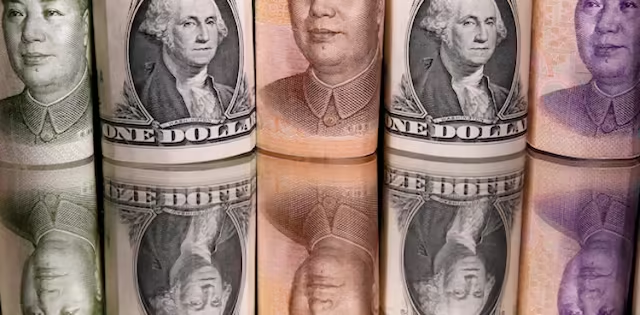Trump’s announcement of 100% tariffs on China caused the U.S. dollar to lose territory against the Swiss franc the previous session, but it gained 0.78 percent to 0.805 versus the currency. The broadside triggered a selloff in equities and cryptocurrency on Friday, bringing back unpleasant memories of Trump’s April Liberation Day unveiling of massive tariffs. Eugene Epstein, head of trading and structured products at Moneycorp in New Jersey, described the situation as “sort of a rerun of what happened after Liberation Day.”
The U.S. dollar often appreciates in response to risk or stress in markets or asset classes, but as was the case on Liberation Day, trade tensions between the United States and its trading partners—in this case, China—caused the reverse effect. “People actually sell the U.S. dollar whenever something like that comes up,” Epstein stated. Recovering from the previous session’s decline, the dollar index, which compares the performance of the U.S. currency to a basket of six other currencies, was last up 0.27 percent at 99.32. Trump softens the tone Trump declared on Sunday, “Don’t worry about China, it will all be fine,” following the announcement of the 100 percent tariffs on Friday.
On the Truth Social network, he wrote, “A highly esteemed President Xi simply had a disappointing moment.” “Neither he nor I want his nation to experience a depression. The United States of America wants to support China, not harm it! Some of the dollar’s gains were tempered on Monday when U.S. Treasury Secretary Scott Bessent expressed confidence that the impasse could be “de-escalated.” “I continue to think that the U.S. dollar is the most secure currency among all developed currencies; the Swiss franc is undoubtedly the same. It was much the same strategy as what transpired last week: dump the US dollar if there are trade concerns of any type. The trade tensions appear to be de-escalating somewhat today, so things are turning around,” Epstein continued.
The announcement of Prime Minister Sebastien Lecornu’s new cabinet lineup on Sunday, which included the reappointment of Roland Lescure, Emmanuel Macron’s close supporter, as finance minister, was largely dismissed by European markets. The euro, which had gained against the dollar in the previous session, was last down 0.43 percent at $1.1564. The dollar gained 0.81 percent against the Japanese yen, reaching 152.36. Japan had a public holiday, which led to less trading. In the meantime, markets evaluated the future of Sanae Takaichi, the new leader of the Liberal Democratic Party, following Komeito’s Friday resignation from Japan’s ruling coalition, which dashed her aspirations of becoming the first female prime minister of the fourth-largest economy in the world.
Carry trading is the practice of traders borrowing money in a low-yielding currency to invest in a higher-yielding one. Usually used as funding currencies, the Swiss franc and the Japanese yen suffered more on Monday than other currencies. One of the top-performing global currencies against the dollar on Monday was the Australian dollar, which rallies in a risk-on atmosphere. It increased 0.65% to $0.6511. At $1.3324, sterling fell 0.25 percent. When compared to the offshore Chinese yuan, the dollar fell 0.14 percent to 7.137.
Following Trump’s announcement of tariffs on Chinese imports and his hint at potential export limits on critical software, the cryptocurrency industry saw over $19 billion in leveraged position liquidations last Friday, which market participants said were the highest in history. Ethereum fell 0.54 percent to $4,120.42 on Monday, while bitcoin fell 0.60% to $114,375.22.





















